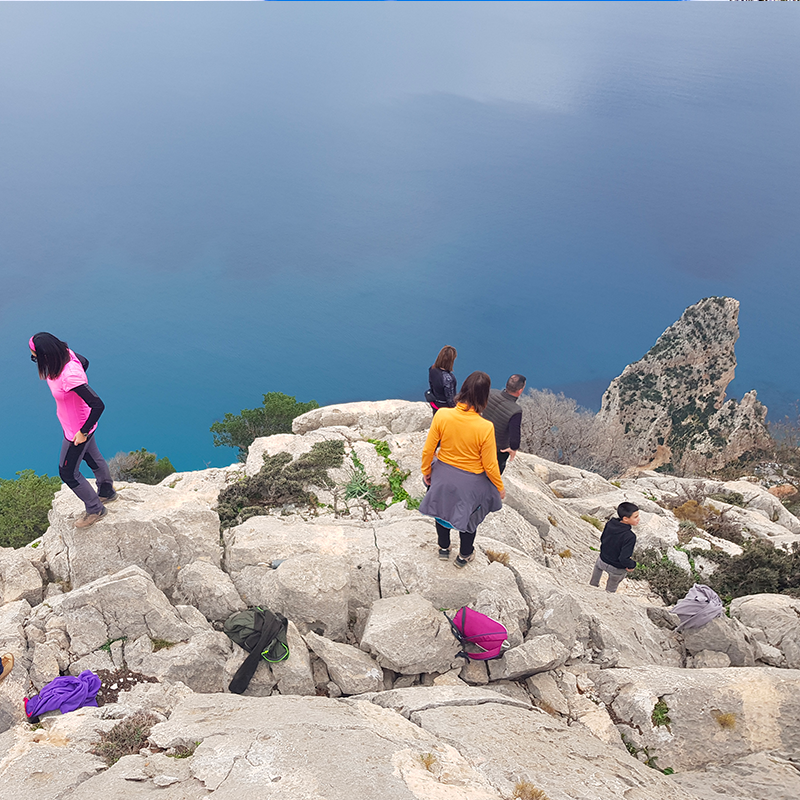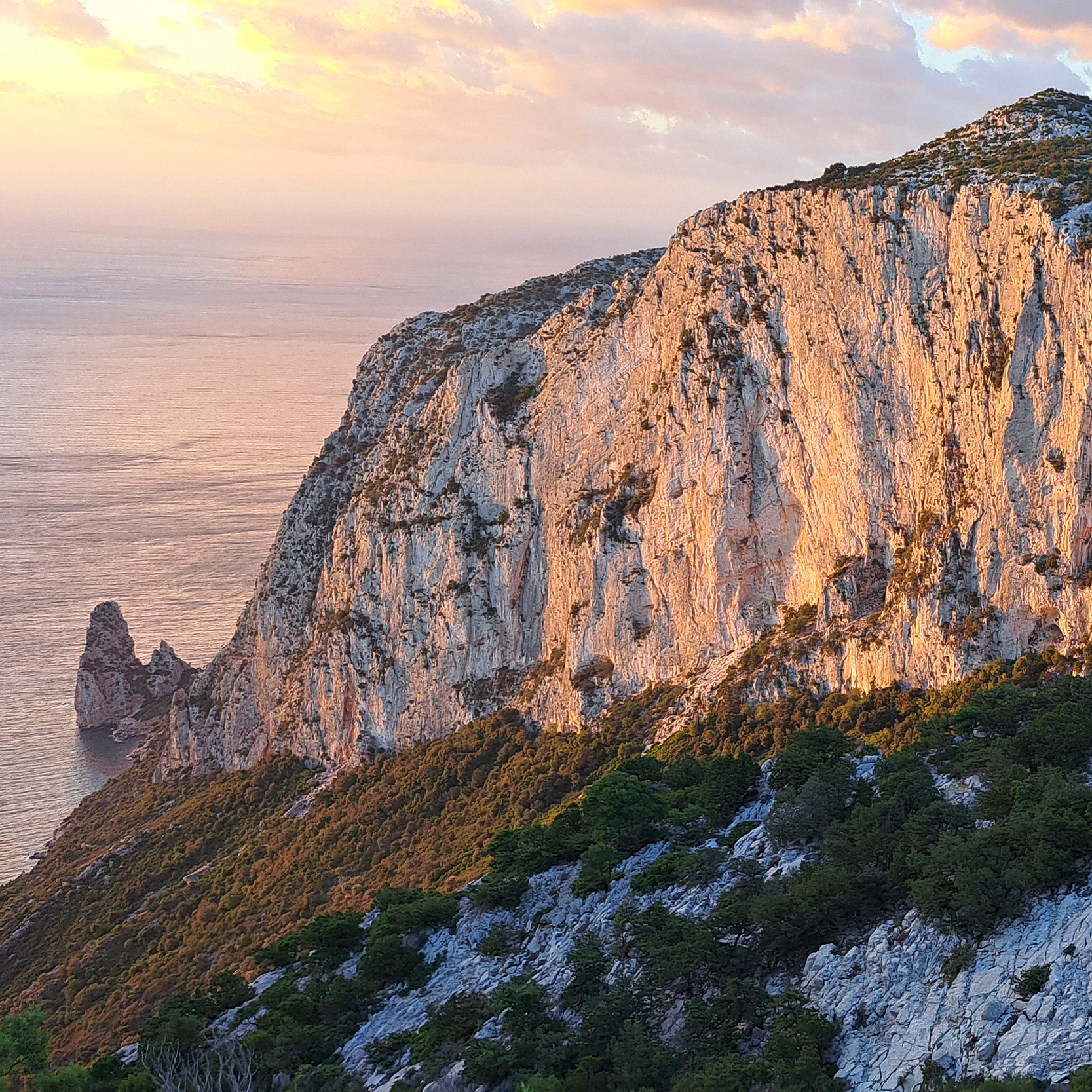CLASSIFICAZIONE DEI PERCORSI IN BASE ALLA DIFFICOLTÀ IN AMBITO ESCURSIONISTICO
T = tourist
FEATURES
Paths to driveways, paths or obvious paths that do not pose uncertainties or issues of orientation, with modest inclines and gradients content.
ABILITA’ E COMPETENZE
Require a knowledge of the excursion of the base and physical preparation for walking.
EQUIPMENT
They are required appropriate clothing and suitable footwear.
E = hiking
FEATURES
Percorsi che rappresentano la maggior parte degli itinerari escursionistici, quindi tra i più vari per ambienti naturali. Si svolgono su mulattiere, sentieri e talvolta tracce; su terreno diverso per contesto geomorfologico e vegetazionale (es. pascoli, sottobosco, detriti, pietraie). Sono generalmente segnalati e possono presentare tratti ripidi. Si possono incontrare facili passaggi su roccia, non esposti, che necessitano l’utilizzo delle mani per l’equilibrio. Eventuali punti esposti sono in genere protetti. Possono attraversare zone pianeggianti o poco inclinate su neve residua.
ABILITA’ E COMPETENZE
Require the sense of orientation and hiking experience and adequate training.
EQUIPMENT
È richiesto idoneo equipaggiamento con particolare riguardo alle calzature.
EE= experienced hikers
FEATURES
Percorsi quasi sempre segnalati che richiedono capacità di muoversi lungo sentieri e tracce su terreno impervio e/o infido (pendii ripidi e/o scivolosi di erba, roccette o detriti sassosi), spesso instabile e sconnesso. Possono presentare tratti esposti, traversi, cenge o tratti rocciosi con lievi difficoltà tecniche e/o attrezzati, mentre sono escluse le ferrate propriamente dette. Si sviluppano su pendenze medio‐alte. Può essere necessario l’attraversamento di tratti su neve, mentre sono esclusi tutti i percorsi su ghiacciaio.
ABILITA’ E COMPETENZE
Necessitano di ottima esperienza escursionistica, capacità di orientamento, conoscenza delle caratteristiche dell’ambiente montano, passo sicuro e assenza di vertigini, capacità valutative e decisionali nonché di preparazione fisica adeguata.
EQUIPMENT
Richiedono equipaggiamento e attrezzatura adeguati all’itinerario programmato.
EEA = experienced hikers equipment
Per ferrata si intende un itinerario i cui tratti su roccia sono appositamente attrezzati con strutture metalliche: cavi, catene, scale, pediglie e staffe, che ne facilitano e consentono la progressione. Prevedono l’uso dei dispositivi di protezione individuali certificati secondo le normative vigenti (imbragatura, kit da ferrata e casco) e una adeguata preparazione tecnica. Sono segnalate alla partenza da apposita tabella e rispettano precisi criteri costruttivi e normativi.
EEA ‐ F (ferrata facile)
The path is little exposed, well-protected and a little challenging, technically. The cable and/or chain and any other fixtures well facilitate the progression together with the numerous supports and holds natural. There may be a short vertical lines. Requires a correct use and careful use of individual protection devices.
EEA ‐ PD (ferrata poco difficile)
Ferrata su tracciato articolato con presenza di canali e camini, passaggi verticali e tratti esposti. Attrezzata con cavo e/o catena, può presentare vari infissi metallici (gradini, pediglie, staffe e scale metalliche). Richiede attenzione nella progressione, appoggi e appigli sono presenti con varietà di soluzione per i passaggi. Necessita un uso corretto e attento dei dispositivi di protezione individuale.
EEA ‐ D (ferrata difficile)
Ferrata il cui tracciato è in prevalenza verticale e può superare qualche breve tratto strapiombante, in cui l’esposizione si sussegue con una certa continuità. Sono presenti cavo e/o catena oltre a una varietà di strutture fisse utili anche per la progressione. Richiede preparazione fisica e tecnica con la capacità di ottimizzare appoggi e appigli per non affaticare gli arti superiori. Necessita di un uso corretto e particolarmente attento dei dispositivi di protezione individuale.
EEA ‐ MD (ferrata molto difficile)
Via Ferrata is spread over the steep walls, which are articulated, with few supports and holds natural evident. Exceeds traits steep with poor artificial elements. High exposure with technical steps and airplanes, which require adequate physical strength and good technical background. Requires a correct use and very attentive of individual protection devices.
EEA ‐ ED (ferrata estremamente difficile)
Ferrata prevalentemente verticale e strapiombante. Per la maggior parte attrezzata con il solo cavo e/o catena, gli appoggi e appigli naturali esistenti sono limitati e solo in maniera occasionale vi è presenza di staffe, pediglie o gradini. Richiede elevata capacità tecnica e molta forza fisica. Necessita di un uso corretto ed estremamente attento dei dispositivi di protezione individuale.
HIKING IN THE SNOW WITH SNOW SHOES
EAI = hiking in the snow
Percorsi che si svolgono in ambiente innevato con l’utilizzo di racchette da neve, entro i limiti dell’escursionismo e quindi su pendenze medio‐basse (≤ 25°). Sono suddivisi su tre diversi livelli di difficoltà (facile, poco difficile e difficile) in ragione del dislivello, del contesto ambientale in cui si svolgono, della preparazione tecnica e dalle problematiche relative alla valutazione del pericolo di valanga che presentano. Prevedono tutte le cautele derivanti dalle specifiche e contestuali condizioni ambientali, tipiche dell’ambiente montano innevato differenti a seconda di altitudine e latitudine dell’itinerario.
EAI ‐ F (facile)
FEATURES
Percorso pianeggiante o con modeste pendenze, pari a un’inclinazione media inferiore ai 10°. Privo di difficoltà in normali condizioni ambientali. Non esposto a pendii ripidi, quindi, il pericolo di valanghe è molto ridotto. Si svolge su tracciati ampi, facilmente riconoscibili. Il dislivello è generalmente contenuto entro i 400 metri.
ABILITA’ E COMPETENZE
Non richiede particolari tecniche di utilizzo delle racchette da neve. Necessita di conoscenze base dell’ambiente innevato e richiede un minimo di allenamento, variabile in base alle condizioni della neve e in funzione dello sviluppo dell’itinerario. Esente da pericoli di scivolamenti o cadute esposte.
EQUIPMENT
È richiesto un abbigliamento idoneo alla stagione. La dotazione di ARTVA, pala e sonda è consigliata fatte salve le normative locali.
FEATURES
Percorso con pendenze per lo più modeste, pari a un’inclinazione media tra i 10° e i 15°. Può attraversare tratti a ridosso o in prossimità di pendii con forte inclinazione e, quindi, potenzialmente soggetti al pericolo valanghe.
EAI ‐ PD (poco difficile)
ABILITA’ E COMPETENZE
Necessità di padronanza nell’utilizzo delle racchette da neve e, anche in normali condizioni ambientali, di buona capacità di valutazione locale del tracciato oltre alla corretta interpretazione del bollettino nivo‐meteo. Non è escluso il pericolo di brevi scivolamenti. È richiesta capacità di pianificazione.
EQUIPMENT
Essential equipment -- ARVA, shovel and probe and the knowledge of the techniques of self-rescue.
EAI ‐ D (difficult)
FEATURES
Percorso che presenta pendenze anche accentuate pari a inclinazioni anche fino ai 25°, su terreno variegato per morfologia ed esposizione e con versanti potenzialmente soggetti al pericolo di valanghe.
ABILITA’ E COMPETENZE
Necessità esperienza e ottima capacità nell’utilizzo delle racchette da neve tali da poter affrontare tratti con pericolo di scivolamento. Richiede avanzate capacità di pianificazione e ottima conoscenza dell’ambiente in funzione del manto nevoso e del pericolo valanghe, abbinata a una corretta interpretazione del bollettino nivo‐meteo oltre che preparazione fisica adeguata.
EQUIPMENT
Indispensabile la dotazione di ARTVA, pala e sonda e la conoscenza delle tecniche di autosoccorso. Può essere necessario dotarsi di piccozza e ramponi a seconda del tracciato previsto e delle condizioni ambientali.


